
Mir Qamar-ud-din Khan Siddiqi also known as Chin Qilich Qamaruddin Khan, Nizam-ul-Mulk, Asaf Jah and Nizam I, was the first Nizam of Hyderabad.

Nizam of Hyderabad was the title of the ruler of Hyderabad State. Nizam is a shortened form of Niẓām ul-Mulk, which means Administrator of the Realm, and was the title bestowed upon Asaf Jah I when he was appointed Viceroy of the Deccan by the Mughal Emperor Farrukhsiyar. In addition to being the Mughal Viceroy (Naib) of the Deccan, Asaf Jah I was also the premier courtier of the Mughal Empire until 1724, when he established the independent monarchy of Hyderabad and adopted the title "Nizam of Hyderabad".

Asaf Jah VI, also known as Sir Mir Mahboob Ali Khan Siddiqi, was the sixth Nizam of Hyderabad. He ruled Hyderabad State, one of the princely states of India, between 1869 and 1911.

Paigah family was a noble family from the former Hyderabad State. The family maintained their own court, individual palaces, and a standing army of about fourteen thousand infantry and cavalry troops.

Mirza Nizam Ali Khan Siddiqi, Asaf Jah II was the 5th Nizam of Hyderabad State between 1762 and 1803. He was born on 7 March 1734 as fourth son to Asaf Jah I and Umda Begum. His official name is Asaf Jah II, Nizam ul-Mulk, Nizam ud-Daula, Nawab Mir Nizam 'Ali Khan Siddiqi, Fateh Jang, Sipah Salar, Nawab Subedar of the Deccan. Sawānih-i-Deccan, a Persian work compiled by Munim Khan, a military commander during the era of Asaf Jah II gave more insight about administration of Asaf Jahis.
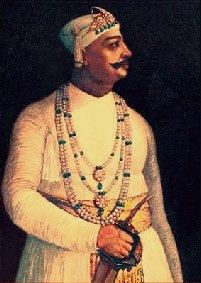
Sikander Jah, Asaf Jah III, was the 6th Nizam of Hyderabad, India from 1803 to 1829. He was born in Chowmahalla Palace in the Khilwath, the second son of Asaf Jah II and Tahniat un-nisa Begum.
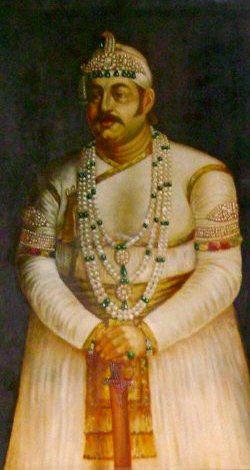
Afzal ad-Dawlah, Asaf Jah VMir Tahniyat Ali Khan Siddiqi was the eighth Nizam of Hyderabad, India, from 1857 to 1869.
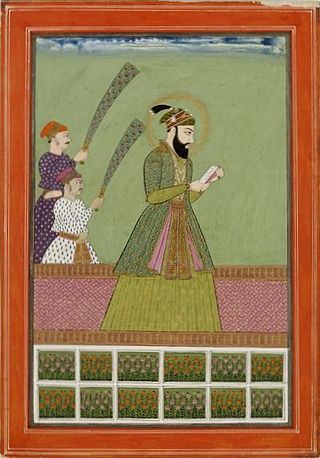
Mir Ahmad Ali Khan Siddiqi Bayafandi, Nasir Jung, was the second Nizam of Hyderabad State. He was the son of Asaf Jah I and his wife Saeed-un-nisa Begum. He was born 26 February 1712. He had taken up a title of Humayun Jah, Nizam ud-Daula, Nawab Mir Ahmad Ali Khan Siddiqi Bahadur, Nasir Jung, Nawab Subadar of the Deccan. However, he is most famously known as Nasir Jung.

The Asaf Jahi was a Muslim dynasty that ruled the Hyderabad State. The family came to India in the late 17th century and became employees of the Mughal Empire. They were great patrons of Indo-Persian culture, language, and literature, and the family found ready patronage.

Hajji Nawab Kalb Ali Khan Bahadur was a Nawab of the princely state of Rampur from 1865 to 1887. Succeeding his father, Sir Nawab Yusef Ali Khan Bahadur, he continued his father's good works, expanding the Rampur library, constructing the Jama Masjid costing Rs.3 lakhs and encouraging the spread of education, irrigation, architecture, literature and art in general. A gifted ruler, Sir Kalb Ali Khan was highly literate in Arabic and Persian and patronised scholars from across India and the Islamic world. He was a member of John Lawrence's governance council from 1878 to his death, attended the Delhi Durbar of Queen Victoria and was granted a personal salute of 17-guns.

Nawab Sayyid Hamid Ali Khan Bahadur was Nawab of the princely state of Rampur from 1889 to 1930.

Sir Raza Ali Khan BahadurGCIE, KCSI, NH, NI was a nawab of the princely state of Rampur from 1930 to 1966.
Qasim Khan Juvayni was a Mughal general and nobleman of the court of Mughal emperors Jahangir and Shah Jahan. He also served as the Subahdar of Bengal, succeeding Fidai Khan, from 1628 to 1631. He is most notable for the capture of Hugli off the Portuguese firingis.

Ma'asir al-Umara, written by Samsam ud Daula Shah Nawaz Khan and his son Abdul Hai Khan, at Aurangabad, is a Persian-language biography of notables in the Mughal Empire during the time period approximately 1556–1780. Variants of the title include Ma'athir al-Umara, Maasir al-Umara, and Maathir ul-Umara. Shah Nawaz Khan relies upon a variety of Persian histories for his information, which he lists in his introduction.
Azad Bilgrami was a scholar of Arabic, Persian, and Urdu languages in 18th-century India. The King of Yemen Husayin II had acknowledged his poetic qualities and accorded him the title of Hassan Al-Hind.
Intizam-ud-Daula, Ghazi ud-Din Khan Siddiqi Bayafandi Feroze Jung II was the eldest son of Asaf Jah I Mir Qamaruddin Khan Siddiqi. He was born on 13 March 1709, his mother is Sa'id un-Nisa Begum, the daughter of a Sayyid nobleman at Gulbarga. He died in Aurangabad on 16 October 1752.
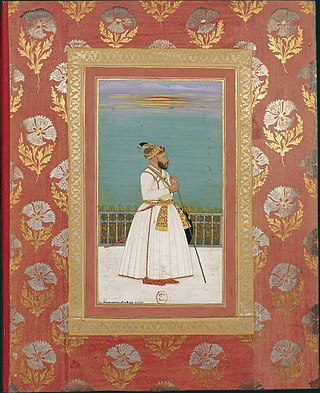
Mian Muhammad Fazil was a Mughal nobleman.
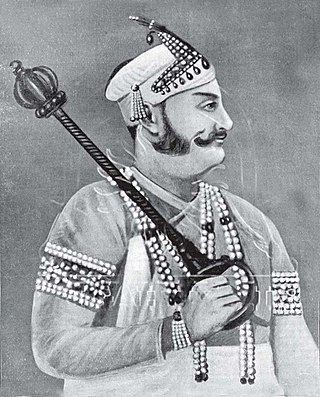
Nawab Muhammad Abu'l Fateh Khan Bahadur, Taigh Jang Bahadur was an Indian nobleman and founder of the House of Paigah. He was also known as Abu'l Khair Khan II and conferred with the titles Shams ul-Umara, Shams ul-Mulk, Shams ud-Daula, and Imam Jung III.
Abu'l Fakhr Muhammad Fakhruddin Khan (1780–1863), also called Amir e KabirShams-ul-Umra I, was an Indian nobleman. He was the first member of the House of Paigah to be matrimonially allied to the House of Asaf Jah. His full name with titles was Shams ul-Umara, Amir-i-Kabir, Khurshid ul-Mulk,Khurshid ud-Daula, Nawab ‘Abu’l Fakhr Muhammad Fakhr ud-din Khan Bahadur, Imam Jang [‘Abu’l Khair Khan III]; he became The First Amir of the House of Paigah, the Paigah Amirs held the honorary monarchal (standard) behind the Nizam of Hyderabad and were the highest order nobility. Paigah members were said to be richer than average Maharajas and had their own standing army, palaces, and courts
Khwaja Kamal, commonly known as Iwaz Khan, was a Turani Mughal leader who served as the last Subahdar of the Berar Subah under the Mughal empire. He also held the distinction of being the first Dewan of the Nizam of Hyderabad.














